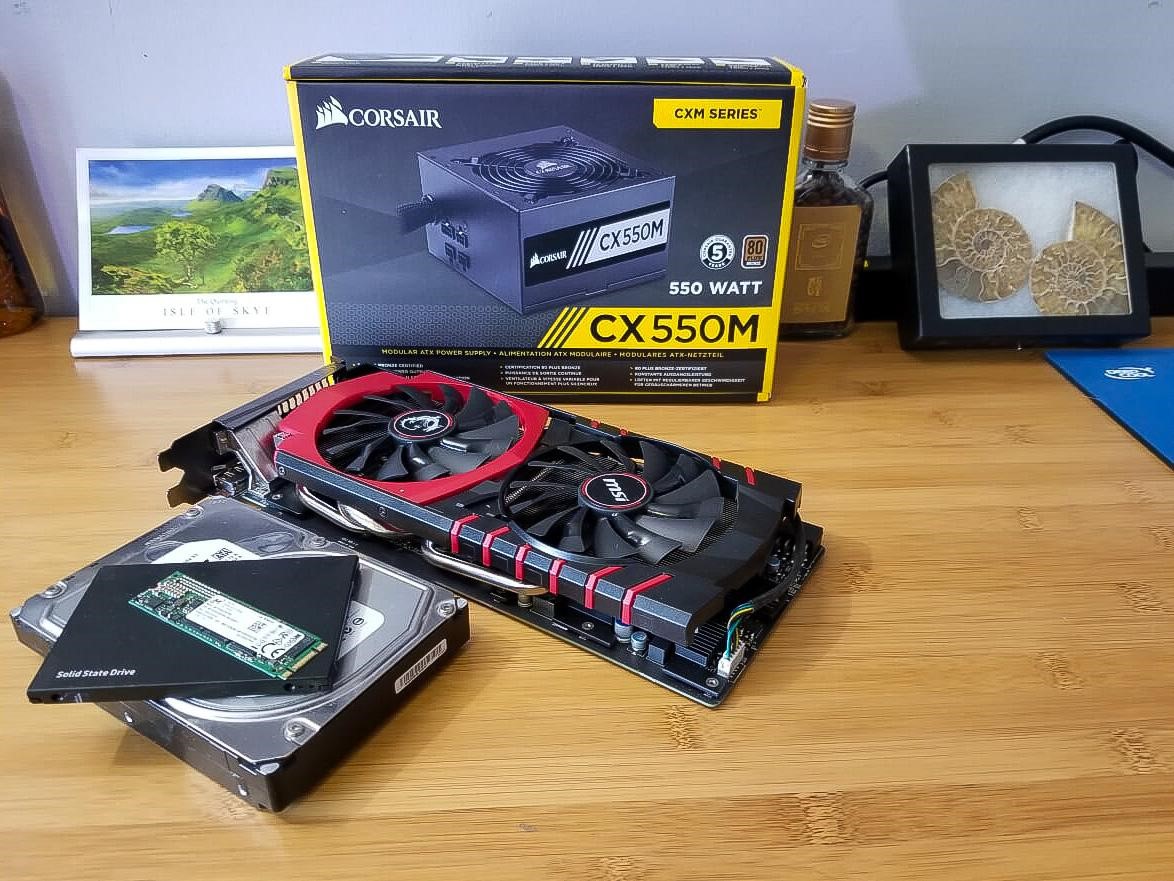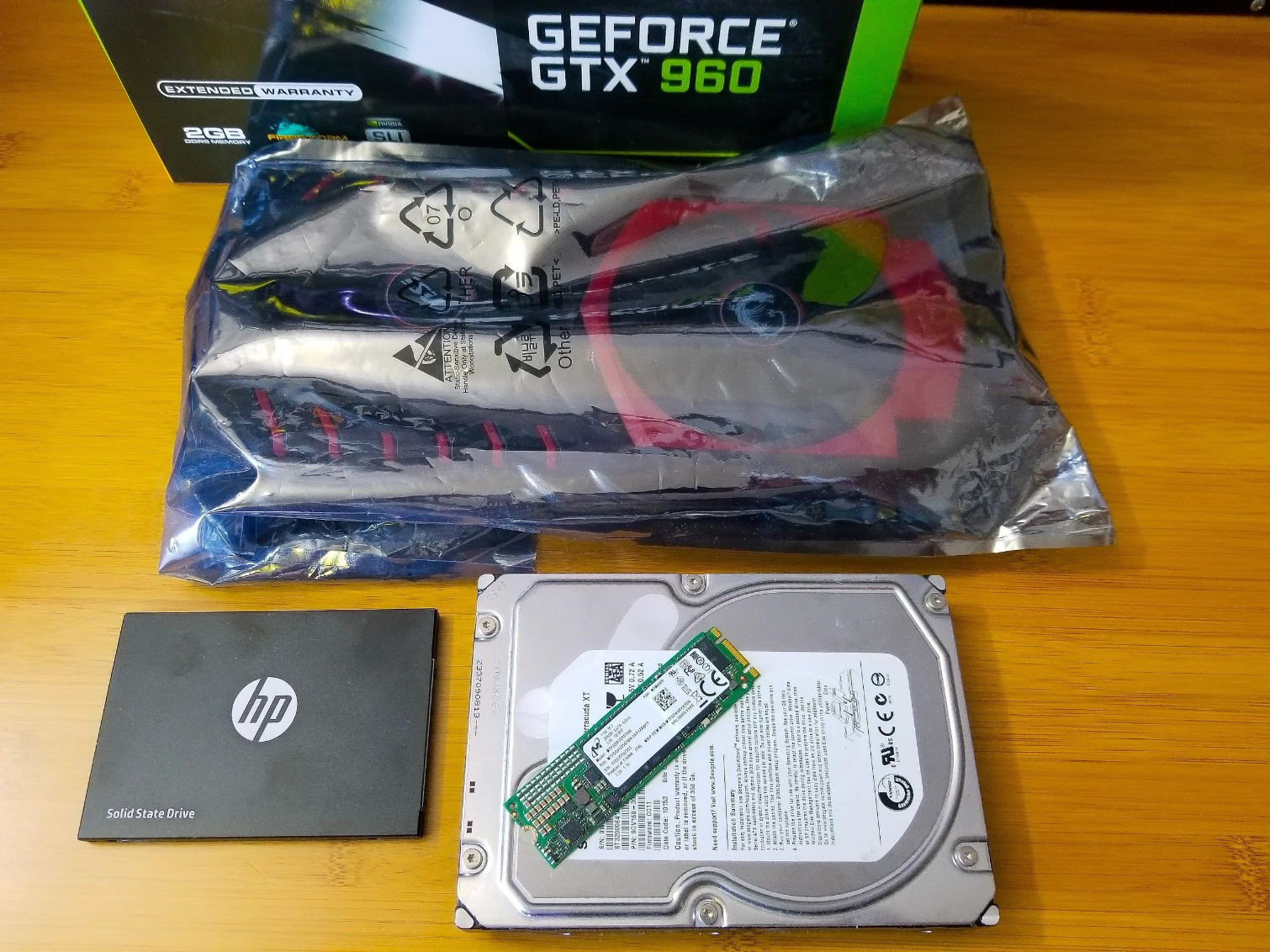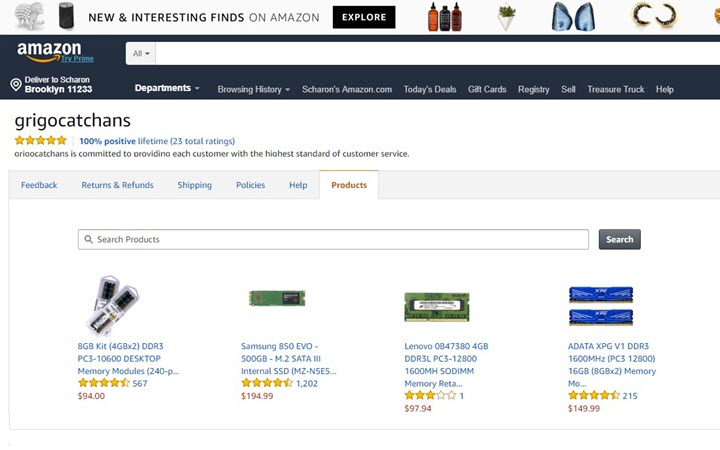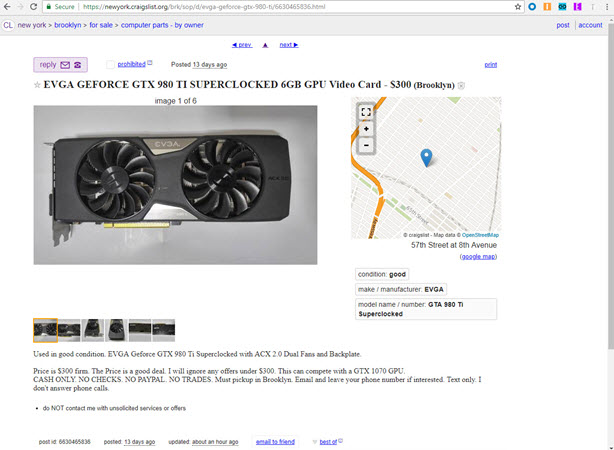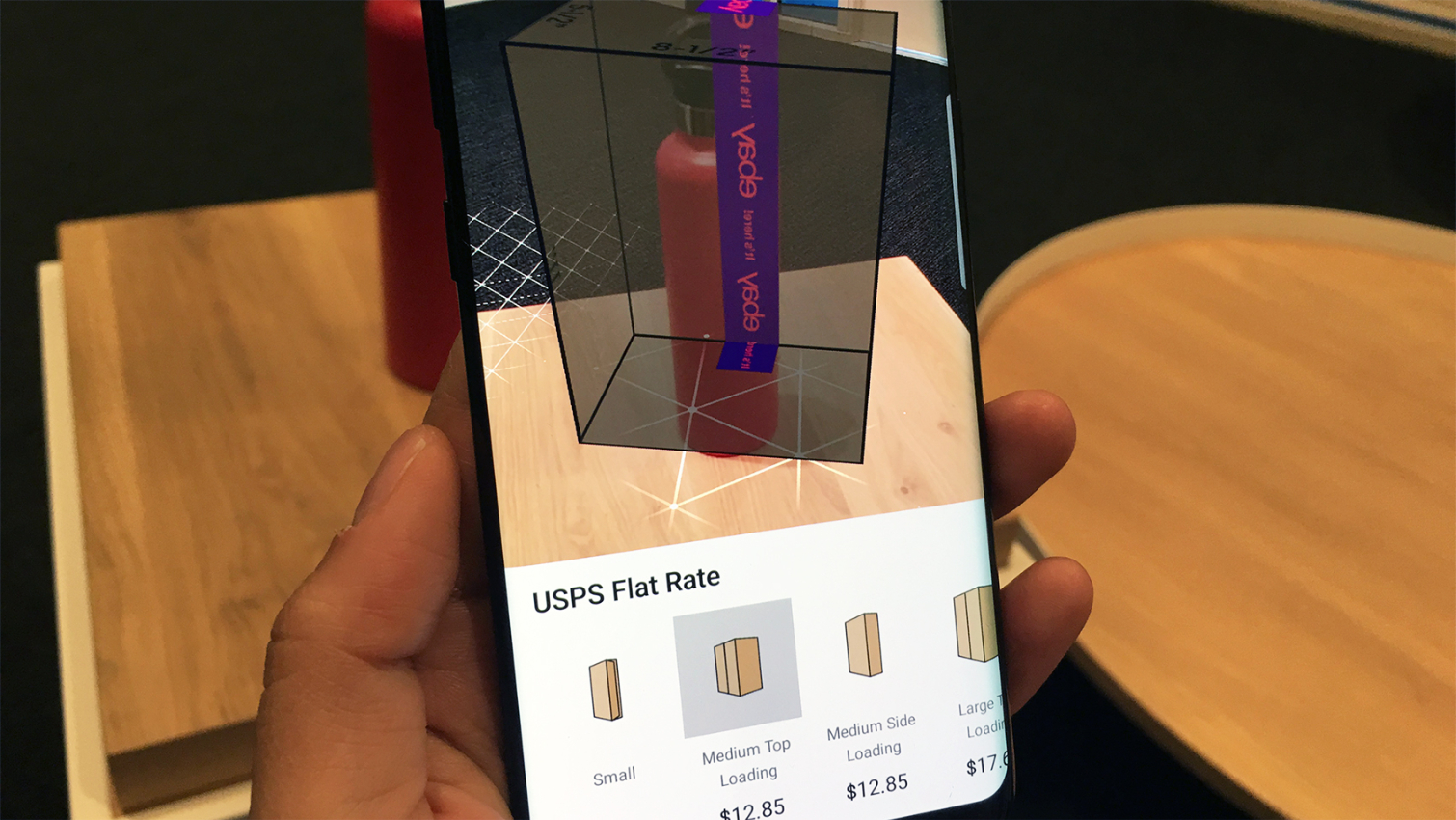Components to Cash: Where to Sell Computer Parts
If you’ve been a PC enthusiast for years – or decades – chances are that you’ve put your paws on a myriad of different components. From motherboards to CPUs, graphics cards and hard drives, to coolers and cases, you’ve purchased a mountain of parts, and many of those used components are probably stuffed away in drawers, closets, or basement bins. And if you aren’t great at clearing clutter, there’s a good chance your office or gaming den looks like the PC geek’s equivalent of a junkyard.
But is that junkyard really a gold mine? If one person’s trash is another’s treasure, should you be turning those old parts into cash? How much effort does it really take to cash in your lovingly used PC parts?
There are many ways to go about selling your components. You can post to your favorite tech forums and see if you can interest fellow posters. You can investigate websites specifically made for trading components for money. You can build an account on e-commerce sites like Amazon or eBay (if you don’t have one already). You can also bash out a Craigslist posting and hope locals take interest.
Each method has its pros and cons, so the route you choose will ultimately depend on your own preferences. But we’ll try to help steer you in the right direction as we investigate your part-selling options below.
How to Sell Used Components: Quick Tips
No matter which way you decide to sell your old components, what’s most important is that you get your money and conduct business safely. Let’s start with some quick and dirty tips to make sure your sales process goes smoothly.
- Shop the market. After getting a trade-in offer, check other sites to see how much they’re charging. eBay, is particularly helpful because you can view open and closed postings. Note that just because an item is posted at a certain cost that doesn’t mean it’ll actually sell for that price. Looking at items that have already sold will give you a more realistic idea of how much your component is going for.
- Think about what you’re selling and how old it is. As one Tom’s Hardware reader put it, something big or heavy like a PC case may be better sold via Craigslist and local pick-up due to high shipping costs.
- Consider your market. If you’re not in a big city, Craigslist may yield minimal results.
- Calculate your budget. How much can you afford to lose on fees? How quickly do you need your money? Craigslist will be COD – assuming you can find a buyer and want a stranger coming to your house. Amazon and eBay can take minutes to weeks to sell. Trade-in sites give you a quote instantly, but it takes a few days to get your money.
- Determine how much effort you’re willing to invest. If you want a quick and clean sell, a trade-in site is best. But if you’re willing to play the game, calculate fees and shipping costs and perhaps even auction, turning to Amazon and eBay can be not only sufficient, but fun. And if you have a lot of components to sell, you may want to set up your own Amazon or eBay store.
- List all details you would personally look for when buying that part.
- Include the model of specific computer(s) that your component works with, advises Kari Ramirez, eBay's lead communications manager. So, if you have an AC adapter for HP Pavilion notebooks or an LCD panel for a Dell XPS 13 9570, put that right in title. Bonus if you have the instructions for inserting or adding a part to the computer.
- Take photos of components individually (as opposed to in a group), so potential buyers can see as much detail as possible.
- Take pictures of any part numbers or specific markings stamped on the computer part that might help the buyer.
- Ensure you know how and when you’ll get your money before shipping your component.
What’s Worth Selling?
The first thing to consider is if your old parts are actually in demand.
We spoke with Saeed Hafez, the CEO of SellGPU.com, a site that’ll buy your components (not just GPUs, also CPUs, RAM, SSDs and processors) directly, to find out what’s selling right now. He told us that, in the most recent quarter, there’s been an increase in in RX 480, RX 580, GTX 970 and GTX 1070 GPU trade-ins, which he attributes to the overall decrease in the profitability of mining cryptocurrencies.
Get Tom's Hardware's best news and in-depth reviews, straight to your inbox.
Finding a buyer for enterprise-grade components, such as Xeon processors and Quadro GPUs, may be difficult. Hafez said these components are the least in demand currently, considering their specialized use cases.
If you’re going to compete with sellers on self-commerce sites like Amazon, eBay and Craigslist, you should consider other listings posted. A large number of postings can signal demand, but it also means you’ll have to find ways to differentiate if you want to get the best price.
At the time of writing, there were 20 different products highlighted as Best Sellers on Amazon’s components page. They were product specific and varied across category, but the most popular was SSDs with six products (there were also two hard drives).
eBay, meanwhile, doesn’t readily have best seller information available, but its Computer Components & Parts page covers the full gamut, including CPUs, GPUs, storage, motherboards, cooling equipment and sound cards.
Craigslist, of course, is local. So what’s in demand will depend on your specific geography. And if you live in a rural area, your potential market is obviously much smaller than if you live in a large city.
You should also consider the age of your component. For example, SellGPU typically doesn’t take mainstream components that are more than eight-years-old. However, eBay's Ramirez told us that shoppers often turn to eBay for “hard to find” products. So if your component is vintage, eBay may be a better bet than trade-in sites.
Forums (like Reddit’s r/computerbazaar) may also be a good bet for older kit, since they cater to tech lovers. However, considering forums can be virtually anonymous and many aren’t inherently made for selling, you are taking risks when it comes to payment. That said, Tom’s Hardware readers say they have, indeed, seen relative success here. If you do decide to sell on a forum, aim for one geared toward sellers like the Tom's Hardware classifieds forum.
Trade-in Sites
If you don’t want to wait around hoping that someone will find/take interest in your Amazon, eBay or Craigslist posting, you can opt to sell your components through a trade-in site. These sites give you a quote for your component and help you ship it to them. There are two stand-out options here: The aforementioned SellGPU and IT Connected. The latter buys processors, motherboards, RAM, video cards, RAID controllers, hard drives, network adapters and optical drives.
If you’re selling to one of these sites, though, it’s important that you’re aware of and agree with the company’s terms. For example, SellGPU’s process has you fill in an order form and instantly receive a quote. The site calculates these quotes on a weekly basis based on market trends and supply chain indicators. If you don’t like the quote you can’t negotiate, unless it’s a bulk order. As long as the component is included and is functional, customers are guaranteed their offer. No screws, wires, or packaging is usually required for trade-in sites. However, SellGPU specifically has a promotion offering an extra $10.00 if you trade in your graphics card with its original box.
To ship, you’ll have to print SellGPU’s free label and either use your own box or have the company send you an anti-static shipping box (important to make sure your part doesn’t get fried by static electricity in shipping) for free. This takes 2-3 business days. When will you get your money? According to SellGPU’s Hafez, shipping normally takes less than 2-3 business days, and SellGPU issues payment within 24 hours of receiving the product. If you want a check, it’ll take 2-5 business days, but PayPal payment is instant. All in all, you’ll be waiting a few days for your PC part payoff.
With IT Connected, on the other hand, you’ll have to pay $4.99 to download and print the company’s shipping label. You can also buy an “appropriately sized box, bubble wrap, anti-static bags and resealing tape” for $4.99. Obviously, this will eat up some of your profit, but IT Connected also offers instant PayPal payment.
Amazon, eBay and Craigslist
We all know about these sites. Create your own posting, build a notable headline, take some pictures and set your own price, including if you’ll pay for shipping or charge buyers. If you’re selling through Amazon or eBay, be prepared to pay commission fees. If you’re selling on Craigslist, the money’s all yours, but, again, your posting will only list locally.
Navigating Amazon and eBay’s fees can be tricky. Amazon has two selling plans: The Professional plan is $39.99/month, plus per-item selling fees, which vary by category. If you plan to sell fewer than 40 items per month, you can opt for the Individual plan, which charges $0.99 per sale, plus selling fees, which vary by category. The selling fees for electronic accessories are as follows: 15 percent for the portion of the total sales price up to $100 and eight percent for any portion of the total sales price greater than $100. Additionally, there’s a $1.00 applicable minimum referral fee: “Amazon deducts the greater of the applicable referral fee percentage or applicable per-item minimum referral fee.”
You’ll also have to manage fees with eBay. First, you pay an “insertion fee” for each category in which you list your hardware. You won’t get that back if your item fails to sell, and if you relist an item you’ll have to pay this fee again. But if you successfully sell via auction, you’ll get that money back. However, sellers also get up to 50 zero-insertion-fee listings per month, or more if you have an eBay store. However, there are some considerations for these as well. eBay also charges a “final value fee” when you sell, or if eBay decides “you intended to complete a sale outside of eBay.” How eBay calculates this fee varies depending on if you sell via auction or fixed price.
So let’s say you want to sell a Dell Broadcom Nextreme Network Card NIC C583R 10Gb Mezzanine for a fixed price of $100 with free shipping. If you’ve already used up your 50 zero-insertion-fee listings, you’ll have to pay a $0.35 fee to post in eBay’s Computer Components and Parts page – more if you want to list it in additional categories. If it sells, you’ll also have to pay eBay a final value fee of 10 percent of $100 (even if you end up selling it for less). That means although your posting was for $100, you’ll get $89.65, minus the cost of shipping, since you opted not to charge the buyer. However, if you had the customer pay for shipping, eBay will charge you a 10 percent final value shipping fee as well, based off the least expensive shipping option offered.
There a lot to consider–and calculate–for both Amazon and eBay. And there’s a lot of fine print; we only scratched the surface here.
Craigslist doesn’t have any seller fees; however, it lacks fraud protection for sellers (unlike Amazon and eBay). This can be discouraging since Craigslist has a reputation for drumming up creeps.
Despite each self-commerce site’s pros and cons, eBay's Ramirez claimed eBay’s advantage over Amazon and Craigslist lies in its technology innovations. For example, earlier this year eBay released an update to its iOS and Android apps said to enable sellers to list an item in under one minute. It uses eBay’s catalogue of listings, a barcode scanner, keyword builder and auto-fill product specifications (including title, stock image, pricing and shipping options) to help sellers list items. The update also provides pricing and shipping recommendations based on over 20 years of buying and selling data eBay has.
eBay also has launched an augmented reality feature this year to help select a shipping box. If you have an Android ARCore-enabled device, such as a smartphone with Android 7.0 or later and access to the Google Play Store, or an iPhone SE and up, you can use eBay’s mobile app to place your item inside virtual boxes to determine the right USPS flat rate box.
Tips for eBay Sellers
- Write a descriptive title and provide as much detail as you can, Ramirez advises.
- Use images to catch shoppers’ attention (you can upload up to 12 on eBay for free). Take high resolution pictures of computer parts with attention to the little details, like part numbers.
- Write product info with care. From an eBay seller’s blog: "List the condition of the part itself, whether it is new, used, or non-working and the reason you are selling that part. This is also a good time to include any part numbers or specific markings stamped on the computer part that might help the buyer with their purchase and may be unclear in the pictures, this helps keep the buyer from having to contact you regarding the computer part and makes the purchasing process quicker for both you and the buyer."
Trade-in or Self-sell?
As you can see, you have a couple of different options: Trade-in or self-sell. Which one is best?
SellGPU’s Hafez admits you may be able to net a higher price for your components on Amazon or eBay. But, perhaps not surprisingly, he claims sellers will still see more convenience, speed, security and peace of mind from his company.
"Let’s assume a gamer sells his/her four-year-old GTX 970 on eBay at the average market price of $140. After standard eBay and PayPal fees and a shipping cost of $16, the seller would net around $105. Our current offer for a GTX 970 is a very close $92.00," he said. "Considering the amount of chargebacks and sometimes fraudulent transactions that happen on online marketplaces, many individuals, especially millennials, choose simplicity, speed and an easier process via SellGPU over the extra few dollars one might earn using a self-commerce website. After all, a fraudulent buyer may unfortunately easily start a chargeback and cost the gamer both his/her GPU and money."
Hafez also noted that checks written Craigslist transactions can have payment stopped and that both Amazon and eBay charges can be disputed as long as six months after the sale.
Ultimately, your choice depends on what you value most in your sales process: speed and security or maximum profit? Do you want to take a laissez-faire approach or do you want to put your entrepreneur hat on and really participate in the sale?
Below is a brief breakdown of our pros and cons of trade-in sites, Amazon, eBay and Craigslist.
| Row 0 - Cell 0 | Trade-in Sites | Amazon | eBay | Craigslist |
| Pros: | Fraud protection;Know what you’ll be paid immediately;Instant sale;Shipping organized for you;No complex fee schemes | Fraud protection;Set your own price;Popular site;Option to open your own e-store; | Fraud protection;Set your own price;Popular site;Option to open your own e-store;Different selling options (auctions or direct sales) | Free to post and re-post;Quick and easy posting;Shipping easier, or not required (sales will likely be local) |
| Cons: | Can’t negotiate for higher price (usually);You’ll likely get less money than on Amazon or eBay | Complex fee scheme;You must figure out shipping;You’ll have to monitor postings | Complex fee scheme;You must figure out shipping;You’ll have to monitor postings;Charges fees even if your item doesn’t sell; | You’ll have to monitor postings;No fraud protection;Postings listed by geography |
What’s your best advice for turning PC components into cash? Let us know by sharing your tips on our forum.
MORE: Best Deals
MORE: Best PC Builds

Scharon Harding has over a decade of experience reporting on technology with a special affinity for gaming peripherals (especially monitors), laptops, and virtual reality. Previously, she covered business technology, including hardware, software, cyber security, cloud, and other IT happenings, at Channelnomics, with bylines at CRN UK.
